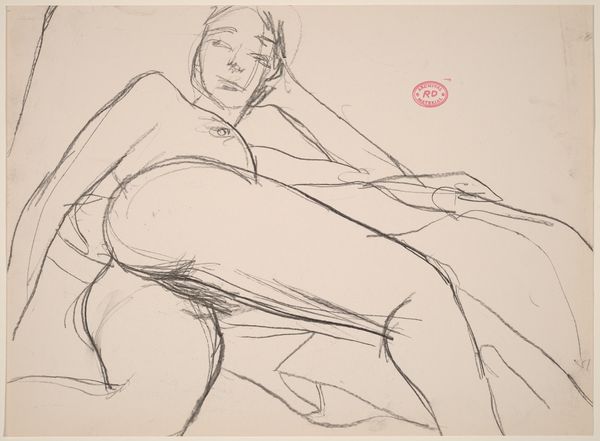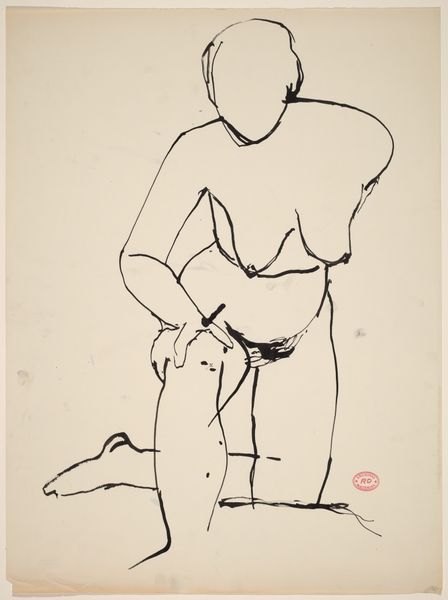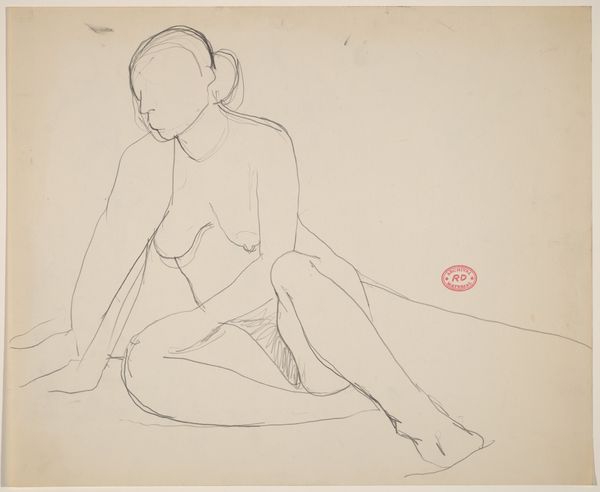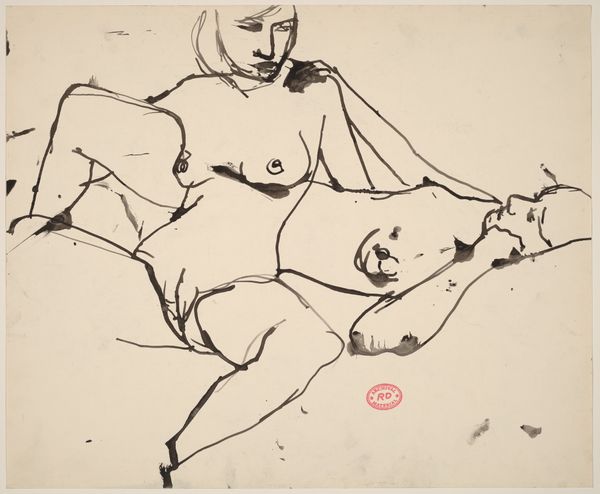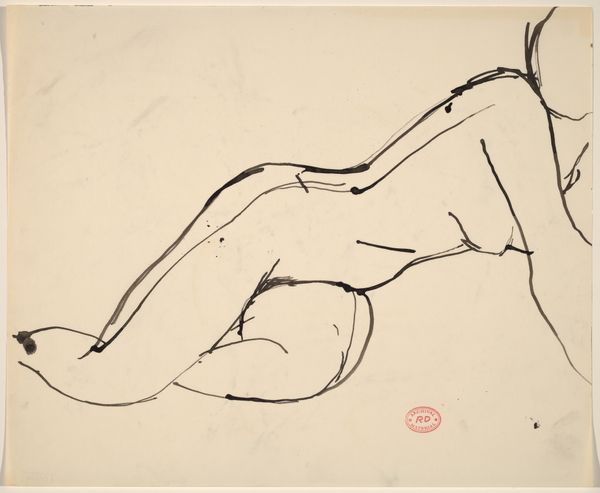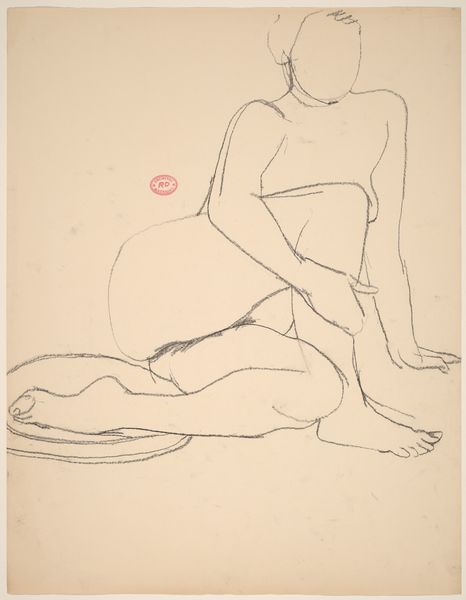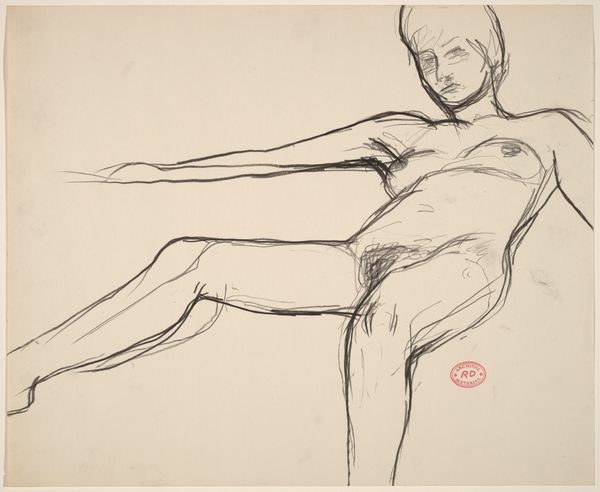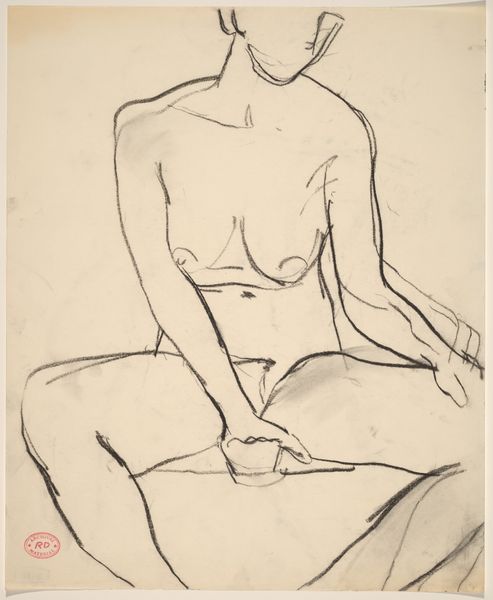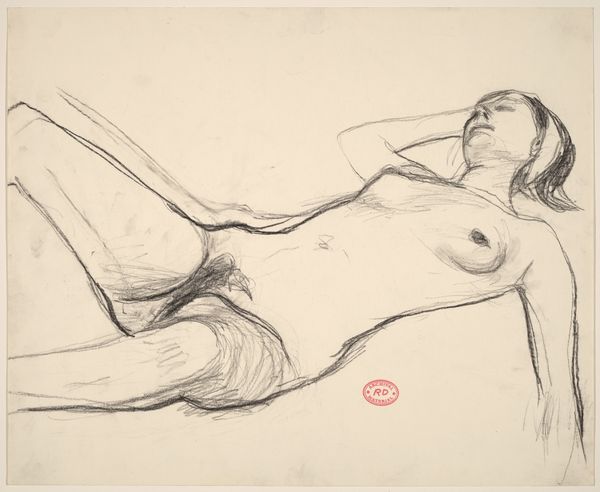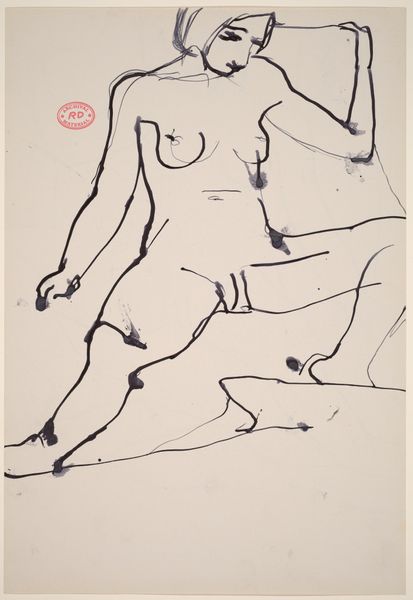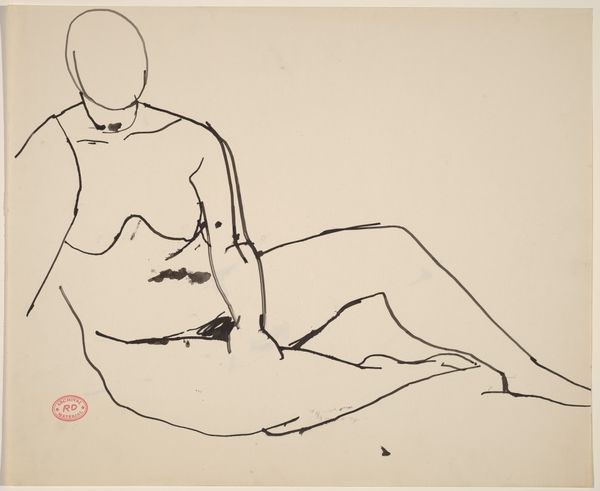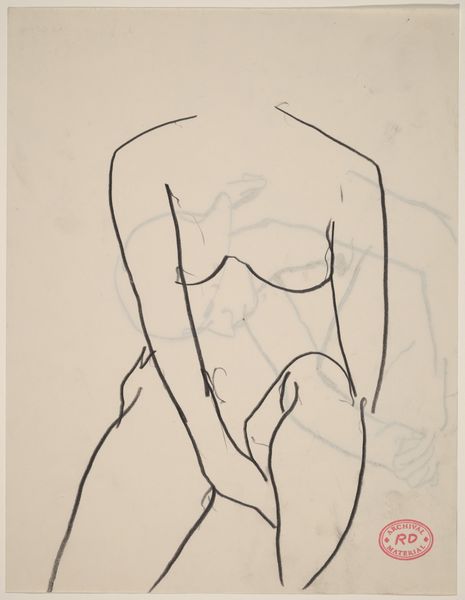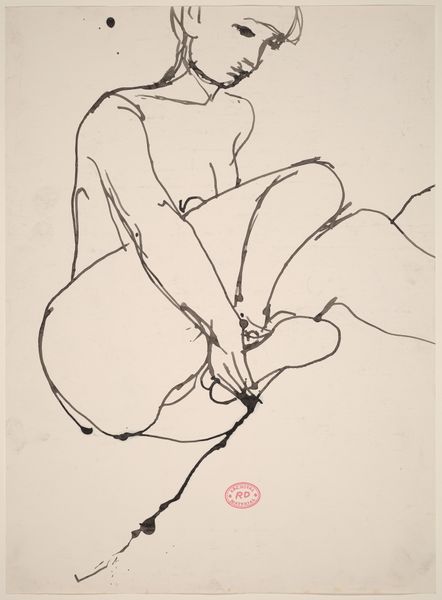![Untitled [seated female nude leaning on right arm] by Richard Diebenkorn](/_next/image?url=https%3A%2F%2Fd2w8kbdekdi1gv.cloudfront.net%2FeyJidWNrZXQiOiAiYXJ0ZXJhLWltYWdlcy1idWNrZXQiLCAia2V5IjogImFydHdvcmtzL2Q5ZTEwMGY2LTc4ZTEtNDU4Yy1hZTA5LTdkZmM0MjI2OWJhYy9kOWUxMDBmNi03OGUxLTQ1OGMtYWUwOS03ZGZjNDIyNjliYWNfZnVsbC5qcGciLCAiZWRpdHMiOiB7InJlc2l6ZSI6IHsid2lkdGgiOiAxOTIwLCAiaGVpZ2h0IjogMTkyMCwgImZpdCI6ICJpbnNpZGUifX19&w=3840&q=75)
Untitled [seated female nude leaning on right arm] 1955 - 1967
0:00
0:00
drawing, ink
#
portrait
#
drawing
#
imaginative character sketch
#
light pencil work
#
ink drawing
#
pencil sketch
#
figuration
#
bay-area-figurative-movement
#
ink
#
idea generation sketch
#
ink drawing experimentation
#
pen-ink sketch
#
arch
#
line
#
sketchbook drawing
#
portrait drawing
#
pencil work
#
nude
Dimensions: sheet: 35.6 x 43.2 cm (14 x 17 in.)
Copyright: National Gallery of Art: CC0 1.0
Curator: Before us, we have Richard Diebenkorn's "Untitled [seated female nude leaning on right arm]", created sometime between 1955 and 1967, executed in ink on paper. What are your initial thoughts? Editor: It has an unfinished, almost vulnerable quality. The starkness of the ink on the paper and the simplicity of the line work makes the figure appear exposed and unadorned, lacking in ornamentation. It’s a direct and somewhat confrontational gaze. Curator: I agree. The directness lends itself to a critical interpretation of the male gaze. However, considering the time it was created, we might view this nude in relation to second-wave feminism and the reclamation of the female body. What do you think? Editor: Interesting. Thinking of it as part of the discourse of the time gives it additional weight. It's clearly a sketch, rather than a finished artwork intended for a grand gallery. Did Diebenkorn show sketches such as this publicly, or were they preparatory? Understanding its reception matters. Curator: Precisely. Knowing the intended audience and circulation reveals power dynamics and attitudes about the representation of women in mid-century America. These works help illustrate Diebenkorn's engagement with depicting the human form during the postwar period, when abstract expressionism dominated, while artists like Diebenkorn returned to figuration. Editor: Yes, moving away from strictly abstract forms was very much a feature of this historical period. We need to acknowledge the place of the artist too. I wonder, was this work conceived to challenge conventions, or simply a study? Perhaps the interplay lies in his working methods; did his exploration of figuration invite other investigations on the representation of women in the public gallery at the time? Curator: Good point. The act of observing, sketching, and then presenting a female nude also enters into broader societal debates on identity, visibility, and the body as a site of contestation. This challenges us to explore Diebenkorn's contribution to feminist dialogues around image and representation, through the institutions that he showed his work within. Editor: Indeed. This seemingly simple drawing reveals the fascinating historical context in which it was created. Curator: Agreed, it highlights the complex relationship between art, artist, and socio-political change.
Comments
No comments
Be the first to comment and join the conversation on the ultimate creative platform.
